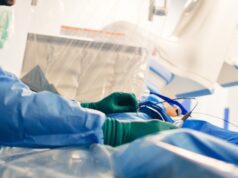
Boston Scientific Corporation has initiated the REPRISE III clinical trial, which is US study to evaluate the safety and effectiveness of its transcatheter aortic valve implantation (TAVI) system—Lotus—in patients with severe aortic stenosis and who are considered to be at either high or extreme risk for surgical valve replacement. The Lotus is the first TAVI device that is both fully repositionable and retrievable prior to release.
A press release reports that Ted E Feldman (director, Cardiac Catheterization Laboratory, NorthShore University HealthSystem in Evanston, USA) and Michael Reardon (professor of cardiothoracic surgery at The Methodist DeBakey Heart & Vascular Center in Houston, USA) are co-principal investigators of the REPRISE III study. It adds that a clinical team, led by Feldman, implanted the first three Lotus devices this week at Evanston Hospital as part of the study. The initiation of the REPRISE III clinical trial marks the beginning of the process required to support FDA premarket approval.
According to a press release, the REPRISE III trial aims to build on strong data from the REPRISE I and REPRISE II clinical studies, which have demonstrated sustained safety and performance outcomes for Lotus. “New data from REPRISE I and REPRISE II, which were presented last week at TCT 2014 in Washington, USA, demonstrate remarkably low rates of paravalvular leakage and all-cause mortality,” says Feldman. “We believe that REPRISE III, which is slated to involve more than 1,000 patients, will confirm these data and show that the Lotus has the potential to improve patient outcomes beyond what we’ve seen with first generation devices.”
REPRISE III is a randomised, open-label study assessing the Lotus system against an active comparator (CoreValve, Medtronic). The primary endpoints of the study are: a composite of all-cause mortality, stroke, life-threatening and major bleeding events, stage two or three acute kidney injury or major vascular complications at 30 days (safety); and a composite of all-cause mortality, disabling stroke or moderate or greater paravalvular aortic regurgitation (leaking) at one year following procedure (efficacy).













